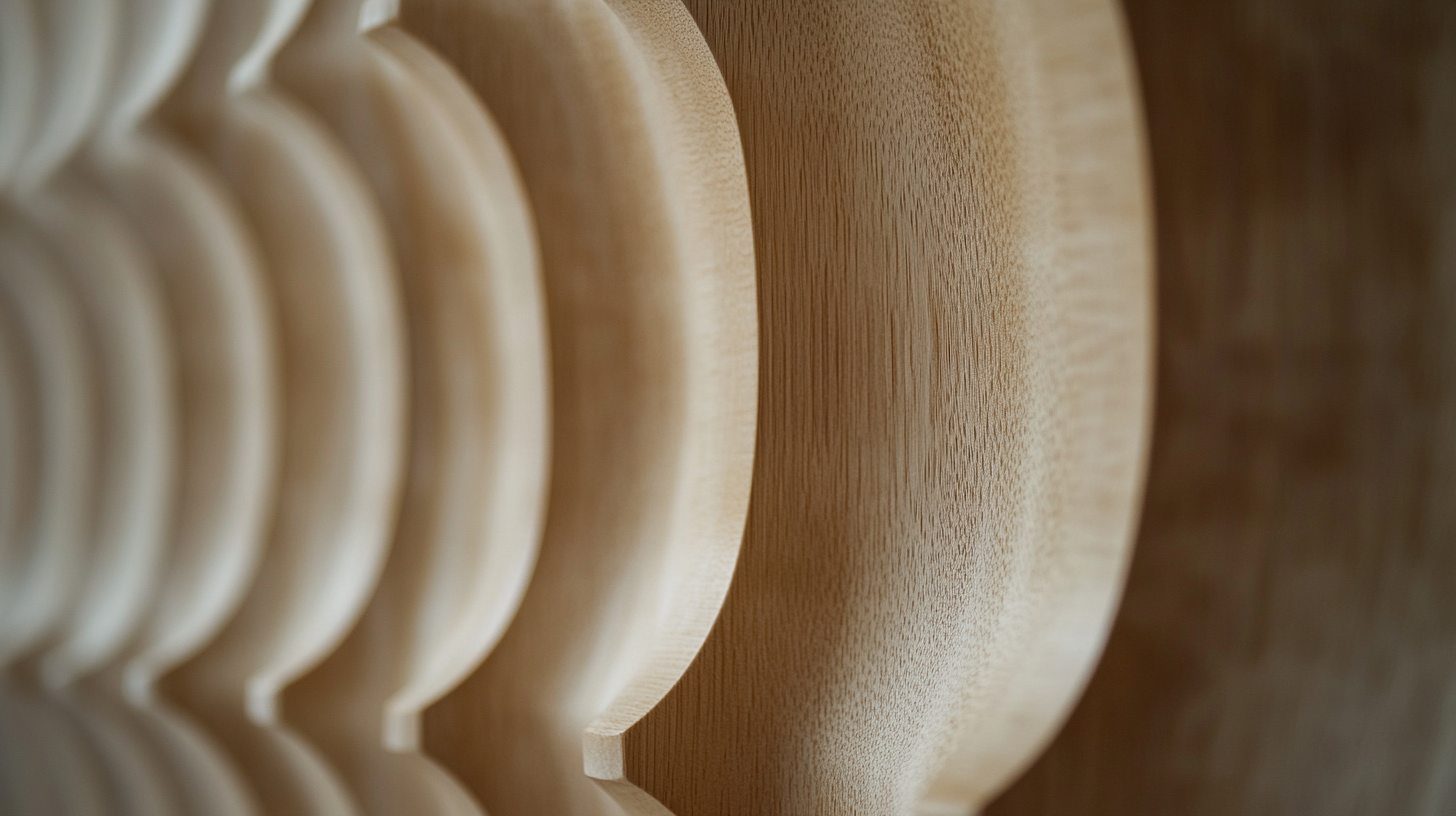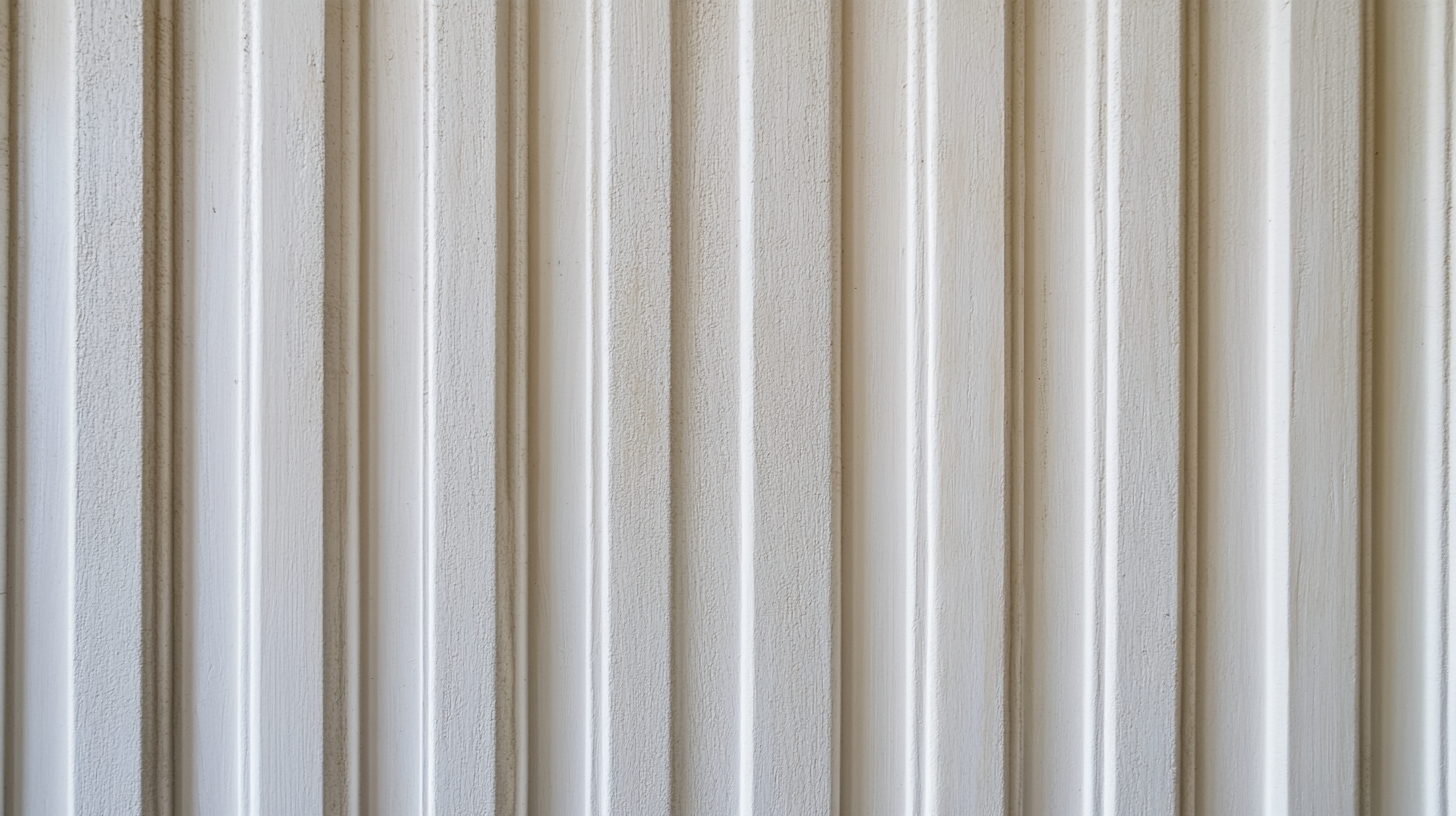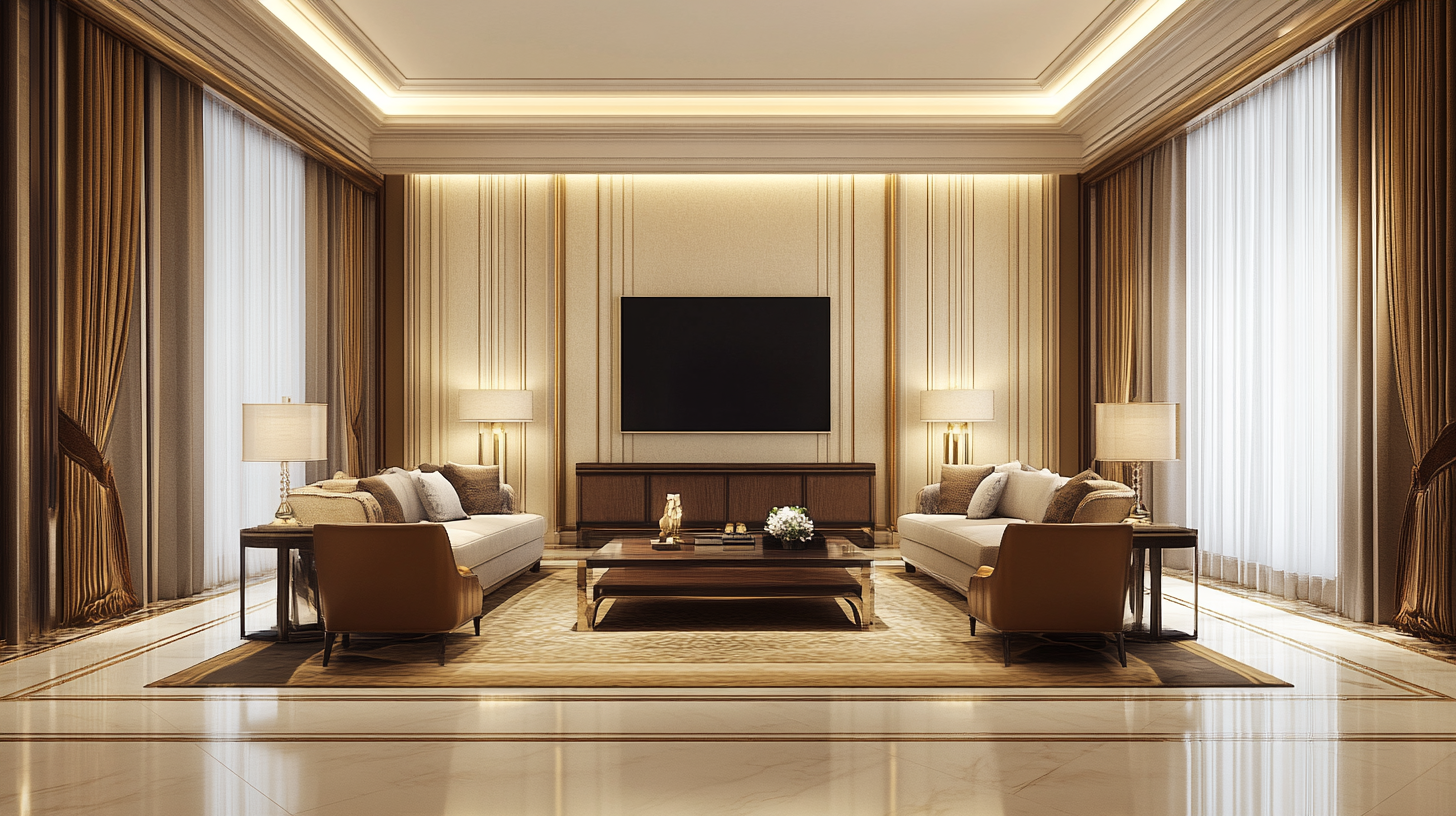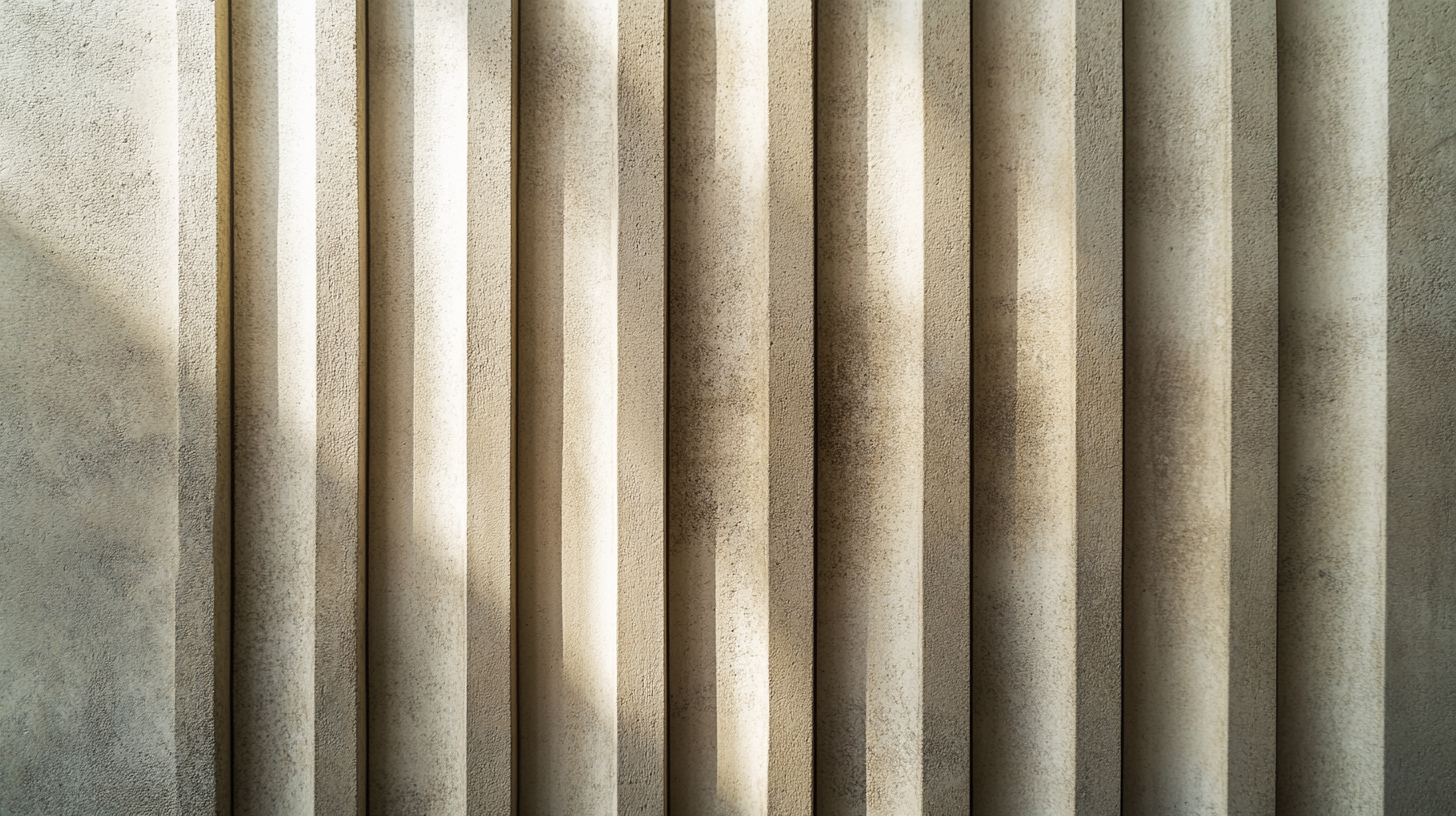Shandong Xiangying New Materials Technology Co., Ltd.
Shandong Xiangying New Materials Technology Co., Ltd.
As the demand for innovative and aesthetically pleasing interior design solutions continues to rise, Fluted Wall Panels have emerged as a prominent choice among architects and designers. According to a report by Grand View Research, the global interior wall panel market is expected to reach USD 83.6 billion by 2025, driven largely by the increasing emphasis on aesthetics in residential and commercial spaces. The unique texture and dimensional appeal of fluted designs not only contribute to the visual interest but also allow for enhanced acoustics and insulation, making them an ideal material for modern construction projects.
However, sourcing quality Fluted Wall Panels can be a daunting task amid a landscape filled with various options. A survey by MarketWatch indicates that nearly 70% of interior designers are unsatisfied with the available selection and quality of wall panels, highlighting the discrepancies in manufacturing standards and materials used. In this ultimate guide, we will delve into key considerations when sourcing Fluted Wall Panels, ensuring you understand how to select the best options that align with your project’s vision and functional requirements.

When it comes to interior design, fluted wall panels have emerged as a popular choice, adding sophistication and texture to various environments. Understanding the different types available on the market is essential for selecting the right option for your projects. Fluted wall panels come in a variety of materials including wood, MDF, and polycarbonate, each offering unique advantages that cater to diverse design needs. According to a report by Grand View Research, the global interior wall panel market is expected to reach USD 83 billion by 2027, indicating a growing preference for customized and aesthetically pleasing solutions like fluted panels. Among the popular types of fluted wall panels, the traditional wooden panels stand out for their timeless appeal and durability. Wood panels can be treated or stained to match any color palette, providing flexibility in design. Alternatively, for those seeking a more cost-effective solution, MDF panels have gained traction. They are lightweight, easily customizable, and can offer a similar aesthetic to real wood without breaking the bank. Furthermore, polycarbonate panels offer a contemporary twist, often used in modern and industrial spaces. Their transparent and lightweight properties create an illusion of space while also allowing light to penetrate, making them ideal for office environments. Beyond materials, fluted wall panels vary in design, from deep grooves to subtle indentations, each influencing the overall ambiance of a room. A study by the American Institute of Architects noted that texture increasingly plays a significant role in creating engaging spaces, with fluted designs effectively drawing the eye and providing a touch of elegance. As architects and designers seek innovative ways to incorporate texture into their projects, the demand for various styles of fluted wall panels continues to rise, making them a crucial element in modern interior design.

When sourcing quality fluted wall panels for your projects, there are several key factors that you should consider to ensure a successful outcome. First and foremost, the material composition plays a crucial role in the durability and aesthetic of the panels. High-quality materials not only enhance the appearance but also contribute to the panel's longevity, making it an investment that pays off over time. When selecting your panels, consider options that are resistant to moisture and wear, allowing them to maintain their beauty in various environments.
Another important aspect to consider is the design and texture of the fluted wall panels. The unique fluted design can add depth and dimension to a space, transforming an ordinary wall into a stunning focal point. It’s essential to evaluate how the panel’s profile aligns with your overall design vision. Additionally, the availability of different flute types can influence the look and feel of your project. From A-Flute to E-Flute, the various options cater to different stylistic needs and can dramatically change the room's ambiance.
Lastly, don’t overlook the sourcing and supplier credibility. Partnering with reputable suppliers ensures that you receive not only high-quality products but also essential support in terms of customization and delivery. Engaging with suppliers who understand market trends can provide insights into innovative designs and applications, enhancing your project's outcome. By keeping these factors in mind, you can effectively source fluted wall panels that elevate your space and meet your project’s requirements.

When it comes to sourcing fluted wall panels for your projects, understanding how to identify high-quality materials is crucial. Begin by examining the texture and finish of the panels; high-quality options typically exhibit a refined surface with consistent grooves that reflect light elegantly. Look for panels made from durable materials that can withstand various environmental conditions, especially if they will be used in high-traffic areas or in spaces with moisture, like bathrooms.
Additionally, consider the manufacturing process. Panels that boast solid construction and well-defined flutes are often crafted using advanced techniques, ensuring they last longer and maintain their aesthetic appeal. It’s advantageous to request samples from suppliers, allowing you to assess the material firsthand. This touch-and-feel approach can help you evaluate not only the visual aspects but also the weight and sturdiness of the panels.
Moreover, sourcing panels from reputable suppliers can greatly enhance your project's outcome. Look for companies that specialize in wall cladding, as they typically carry a range of options and can provide valuable insights about trends and maintenance. Engaging with a knowledgeable supplier will ensure you choose high-quality fluted wall panels that fit both your design vision and functional needs.

When embarking on your journey to source quality fluted wall panels, it’s essential to identify the top manufacturers and suppliers that can meet your project requirements. According to a recent report by The Architect’s Journal, the demand for textured wall panels has surged by nearly 15% in the last three years, driven by a growing preference for sustainable and aesthetically appealing materials in both residential and commercial spaces.
Among the leaders in the fluted wall panel market is **Skyline Panels**, known for its innovative designs and eco-friendly manufacturing practices. Their panels are produced using recycled materials and are customizable in various finishes, catering to diverse client specifications. Additionally, **Modern Wall Solutions** offers a comprehensive range of fluted panel options that include acoustic properties, making them a preferred choice for offices and public spaces where sound absorption is a priority.
**EcoPanel Industries** is another notable player, reported to have increased its market share by 20% in the last year. Their commitment to sustainability is matched with cutting-edge technology, ensuring durability and ease of installation. Furthermore, recent market analysis indicates that consumers are increasingly inclined towards suppliers that offer both quality products and environmental assurance. As you explore these manufacturers, leveraging industry insights and consumer trends can help ensure that you select the best options for your upcoming projects.
Fluted wall panels are making a significant impact in interior design, transcending traditional aesthetics to offer both style and functionality. As indicated by recent trends, fluted finishes are increasingly popular in various applications, including cabinets and feature walls. This surge is attributed to their ability to add depth and texture, transforming plain surfaces into statement pieces. Incorporating fluted wall panels into your projects not only enhances visual interest but also aligns with current design preferences that favor intricate detailing over flat, monotonous finishes.
When it comes to installation, achieving a seamless look is crucial. Preparation is key: ensure that the surfaces where the panels will be installed are clean and level. Professional reports suggest that using a level and moisture-resistant adhesive will yield better results, particularly in areas prone to humidity. If you’re opting for DIY installation, consider investing in quality tools like a pneumatic nail gun or a miter saw for cleaner cuts and a more polished finish.
Maintenance of fluted wall panels is relatively straightforward. Regular dusting and occasional wiping with a damp cloth will keep the panels looking fresh. It’s also advisable to apply a protective sealant, especially in high-traffic areas, to prevent wear and tear. By following these tips, you can ensure that your fluted wall panels not only elevate your space but also stand the test of time, adapting to evolving design trends seamlessly.
